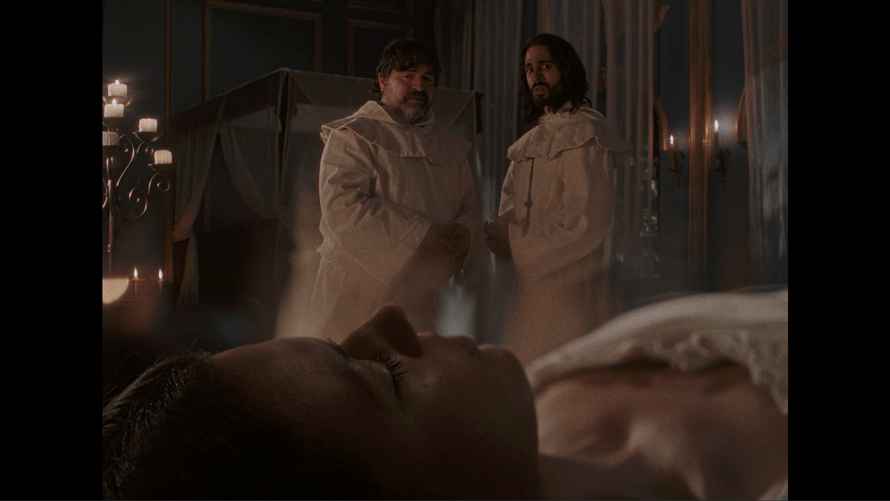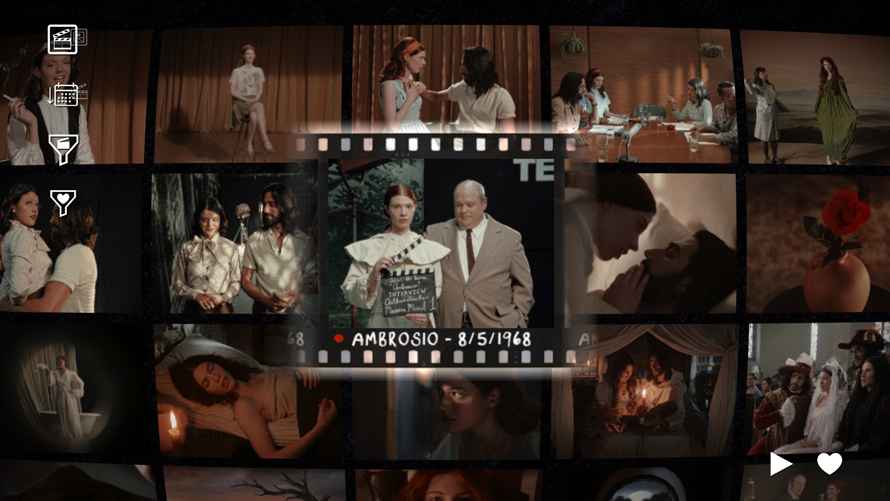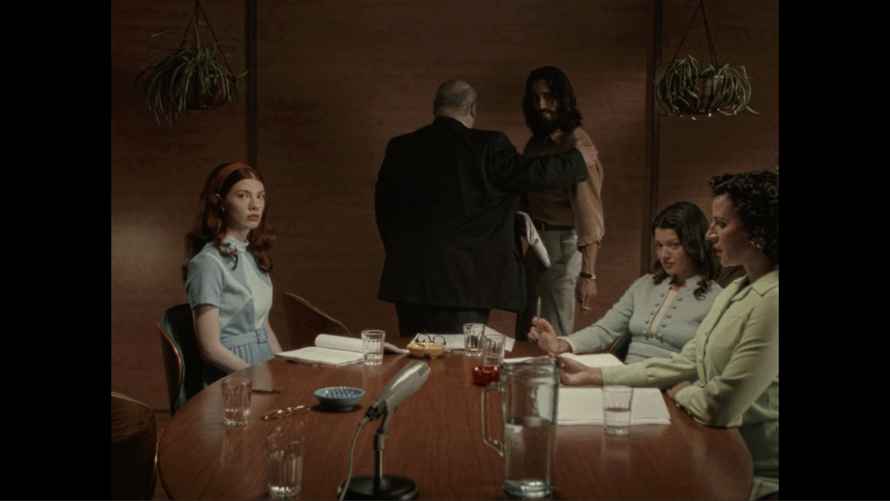Immortality Review
Game developer Sam Barlow is probably as close as the industry has to an auteur. The writer-director of Her Story and Telling Lies has returned with Immortality. Like those previous games, Immortality is a collection of full-motion video clips hiding multiple secrets and stories. Does Immortality rise to same height as Balow’s other work?
The Medium is the Message
We’ll try not to spoil anything, here, because discovery, puzzle solving and surprise are core values in all of Barlow’s games. If you’ve played either Her Story or Telling Lies, you know at least some elements of Barlow’s approach. The games are made up of carefully constructed and meticulously edited video clips. Your task as a player is to comb through them for clues in order to solve whatever the central mystery is. And, like with all great fiction, the narrative is not necessarily what the story is about.
Immortality concerns a young actress named Marissa Marcel and the three unreleased films on which she worked. They included the late-1960s Ambrosio, a film about a sexually tortured monk in the middle ages; Minsky, a noire-ish detective film from the 70s, and 1999’s Two of Everything, which was Marcel’s comeback movie after a long hiatus.

None of the films that Marcel worked on ever saw the light of day. Marcel herself disappeared both into professional obscurity, and literally. Decades later, speculation surrounds Marcel, her films and her career. Your task is to unravel several mysteries. Where did she go? Why were her films never finished? Finally, the biggest questions: how did Marcel’s life imitate her art, and how do artists separate themselves from their personas and their creations?
Devil in the Details
Like Barlow’s other games, Immortality consists of dozens and dozens of FMV clips. They come from a dizzying array of sources. There are clips from Marcel’s three films, most bookended with the director starting the shot or ending the scene. There are clips from talk show interviews, PR segments, blocking rehearsals and table reads. Some of the clips appear to be candid, behind the scenes conversation between actors. Quite often, the line between acting and real life is pretty thin. It’s pretty clear that almost nothing is the way it seems. Movies, after all, are make believe. Sometimes neither we nor the actors know the difference.
The player’s task is to study each clip meticulously, parsing it for clues and resonances. You can endlessly play and rewind the clips, even advance or replay them frame by frame. At any time you can pause and look for highlighted areas. When you click them, you’re sent to a new clip — often from a completely different film or timeline — that somehow relates to the first scene. Sometimes it will be the same actors, or variations on objects. It’s constantly surprising and interesting. The spiderweb of relationships and ideas just keeps growing richer and more complex. Eventually, themes start to emerge.

Every clip you’ve seen ends up on an assemblage that you can manipulate, grouping the clips by date, film or whatever chronology you prefer. It’s a way to refresh your memory about what you’ve seen and maybe make the connections that only a zoomed-out perspective allows.
Effortless Complexity
It’s impossible to emphasize too strongly how carefully each clip has been filmed, edited and processed. Each of Marcel’s films of course has a period look that also reflects the genre, writing style and directorial emphasis. In interviews, table reads and other candid moments, Marcel comes across as a cypher that maybe lives a little too much in her art.
I can’t even imagine the under-the-hood complexity that drives the connections between clips. Barlow has said that Immortality is a horror game, and cites not only his work on Silent Hill as an inspiration, but a variety of films and authors in the genre. He’s noted that “there’s a kind of horror that exists on the periphery of your vision, one that once injected into your brain isn’t easily flushed out when you turn the screen off.”
The easily triggered should note that Immortality doesn’t shy away from adult content. Marcel’s films include explicit language, nudity, gore and violence. But the real horror is emotional, psychological and mostly not literally on screen.
Triumphant Trilogy
Did I solve the mystery? I don’t know. I doubt that I even saw all the clips. Barlow has said the game has no fail state and for some players, not having a clearly defined path or structure will be a frustrating problem. There was not a single clip that was uninteresting or felt irrelevant, but there were long stretches when I had no idea what I was looking for or how to find it. Then there were those a-ha! moments when I started to understand. Maybe. Did I sometimes feel like Immortality was being a little too self-consciously clever for its own good? Or that too many of the clips had the same tone? If I’m being totally honest, yeah. But mostly, I was enthralled.

I think it’s no exaggeration to say that Immortality is often brilliant. The acting, writing, editing and videography are meticulously intentional and if the path through the woods isn’t always clear, the trees are unfailingly interesting to study. While it isn’t perfect, I’m glad that games like Immortality exist. There are so many games that are sequels, copycats, reboots, remakes and retreads that you forget what originality actually looks like. All of Barlow’s games have been excellent but Immortality is probably the richest and most thought-provoking of the three.
***PC code provided by the publisher***
The Good
- Fascinating story
- Incredibly well produced, acted and edited
- Engaging ideas and puzzles
The Bad
- Goals are opaque
- Stretches can feel aimless

